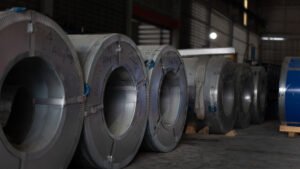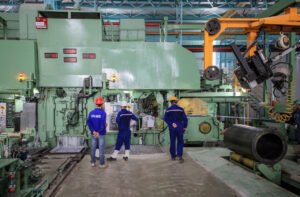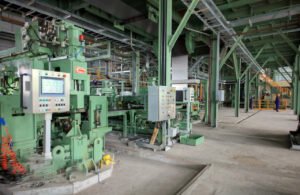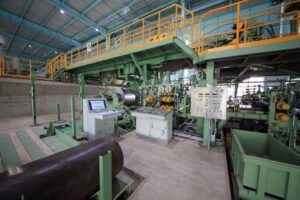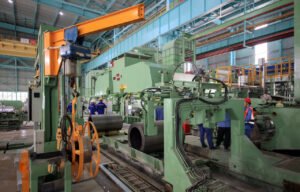Regional Price Comparison: Stainless Steel Sheet in USA, EU, India & Southeast Asia

Are you struggling to make sense of the volatile and vastly different prices for stainless steel sheets across the globe? This pricing puzzle complicates budgeting and squeezes profit margins, leaving you to wonder if your procurement strategy is truly optimal or if you're leaving money on the table. By understanding the core drivers behind these regional disparities, you can transform your sourcing process from a guessing game into a strategic advantage.
Stainless steel sheet prices vary significantly across the USA, EU, India, and Southeast Asia. These differences are primarily driven by regional trade policies, raw material accessibility, local production costs, and prevailing market demand, creating distinct and complex pricing environments for global buyers to navigate.
Throughout my career as Global Business Director at MFY, I’ve guided countless clients through this complex landscape. A simple price list from different regions is merely a starting point; it doesn't reveal the hidden risks or opportunities. True mastery lies in understanding why a sheet of 304-grade steel costs what it does in Chicago versus Mumbai. This article will equip you with that deeper knowledge.
Simply chasing the lowest price on a spreadsheet is a common but dangerous mistake. It’s a one-dimensional view of a multi-dimensional problem. I've seen companies lured by low initial quotes from unfamiliar suppliers, only to be blindsided by crippling tariffs, unexpected logistical nightmares, or subpar material quality that brings production to a halt. For example, a US-based client once considered a seemingly cheap offer from an unvetted trader, not realizing the price didn't account for the hefty Section 232 tariffs1, which would have ultimately made it 25% more expensive than sourcing through an established partner like us. The real cost of steel is never just its price tag; it's a reflection of geopolitical tensions, local economic health, and supply chain robustness. This article will deconstruct these factors to help you build a more resilient and truly cost-effective procurement strategy.
What are the current regional price differences for stainless steel sheets in the USA, EU, India, and Southeast Asia?
Are you struggling to get a clear, up-to-date picture of stainless steel sheet prices across key global markets? The lack of transparent, consolidated data can lead to overpaying and missed opportunities, leaving you unsure if you're getting a fair deal in a volatile market. This section provides a clear overview of the current price landscapes, empowering you to benchmark effectively.
Currently, the USA and European Union exhibit the highest prices for stainless steel sheets, largely due to protective tariffs, stringent regulations, and higher operational costs. In contrast, India and Southeast Asia, as major production and consumption hubs, generally offer more competitive baseline pricing structures.
A simple price snapshot is useful, but it's only the beginning of the story. From my vantage point at MFY, I've seen clients make critical errors by acting on this surface-level information alone. For instance, a construction contractor in Dubai might see a low price from a Southeast Asian supplier and jump at the opportunity, without considering the specific grade's availability or the logistical nuances that could inflate the final landed cost. The real value lies in understanding the forces creating these price points. Why is a 304-grade sheet in Chicago priced so differently from one in Mumbai or Ho Chi Minh City? The answer involves a complex interplay of local production costs, trade winds, and regional demand dynamics. A few years ago, we helped an engineering firm in Mexico that was perplexed by this very issue. They saw a 15% price difference between two sources and couldn't understand the drivers. We walked them through a Total Cost of Ownership (TCO) analysis, revealing that the "cheaper" option came with longer lead times and higher shipping insurance, effectively erasing the initial savings. This deeper understanding is crucial for building a resilient supply chain that doesn't just save money today but protects your projects from market volatility tomorrow. Let's peel back the layers.
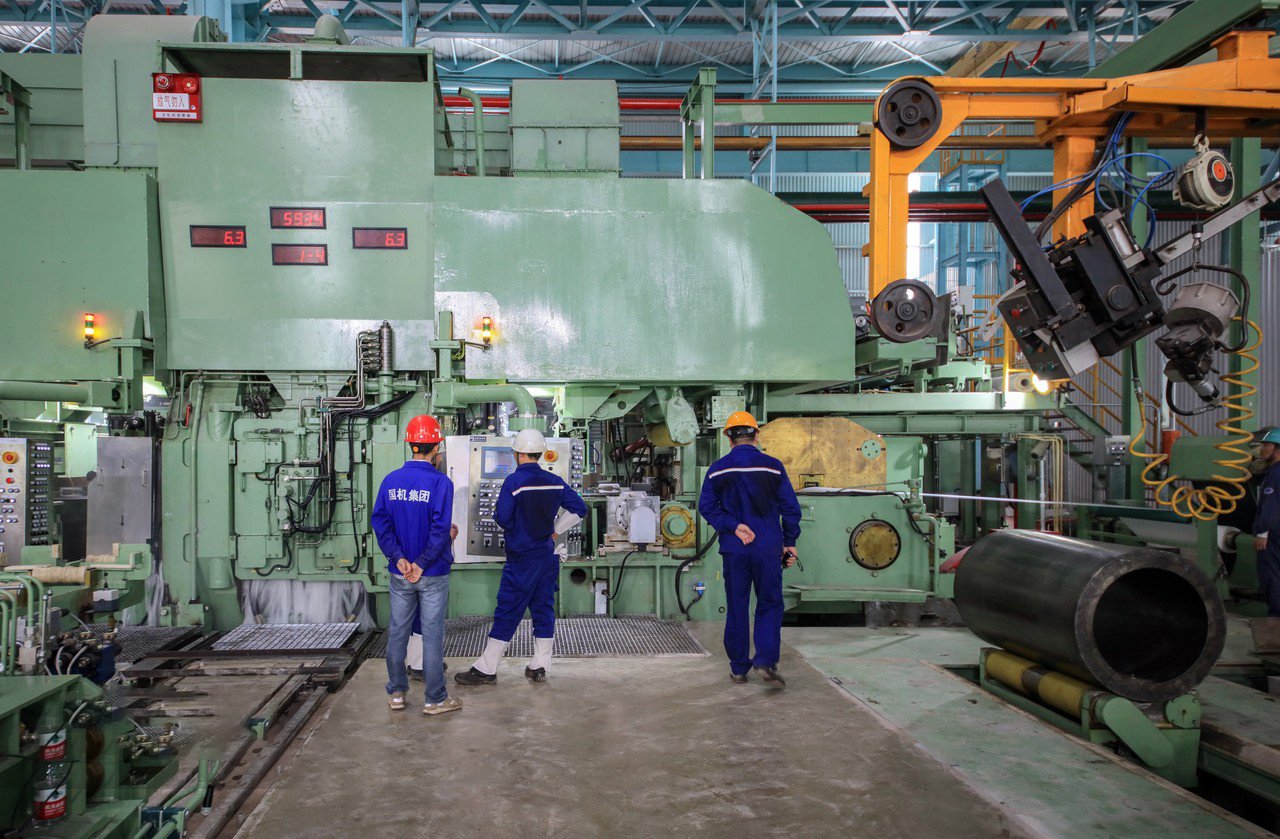
The global stainless steel market is not a monolith; it's a patchwork of distinct regional markets, each with its own pricing logic. Failing to appreciate these nuances can be a costly mistake. The price you are quoted is the end result of a long chain of economic, political, and logistical factors. Understanding this chain is the first step toward procurement excellence. At MFY, our entire business model is built on mastering these regional intricacies to deliver not just a product, but a strategic sourcing solution. We continuously analyze these markets to provide our clients with the clarity they need to make informed decisions. This is more than just a service; it's a partnership aimed at navigating complexity and maximizing value.
The High-Cost Barriers: Examining the USA and EU Markets
In my experience dealing with clients from North America and Europe, the conversation almost invariably turns to the high cost of locally sourced stainless steel. The primary culprits are protectionist trade policies. In the United States, the Section 232 tariffs impose a significant tax (often around 25%) on most imported steel, fundamentally inflating the domestic market price. Similarly, the European Union employs a system of anti-dumping (AD) and countervailing duties (CVD) specifically targeting steel from certain countries, including China. These are not just taxes; they are strategic barriers designed to shield domestic producers from what is perceived as unfair competition. For a buyer, this means that even if the production cost of steel in Asia is lower, the final price after it lands in Los Angeles or Rotterdam is artificially elevated.
Beyond tariffs, the operational environment in these Western economies contributes significantly to higher prices. Energy costs, for instance, are substantially higher than in many parts of Asia. Environmental regulations, while critical for sustainability, impose stringent compliance requirements on mills, adding another layer of expense. I recall a conversation with a German automotive client who explained that while they valued the quality of EU-produced steel, the "all-in" cost, which includes these regulatory and labor overheads, was becoming a major challenge for their competitiveness. Higher labor wages and stricter workplace safety standards, while positive in their own right, also factor into the final cost of a stainless steel sheet produced in the EU or USA.
ly, the market structure itself plays a role. The steel industry in the West is more consolidated than in Asia. With fewer, larger players, there is naturally less price competition. These established mills often focus on high-margin, specialized products, which can sometimes lead to tighter supply and higher prices for more common grades of stainless steel sheet. For a manufacturing company needing a standard 304 sheet, this can mean paying a premium compared to sourcing from a more fragmented and competitive market. This combination of tariffs, high operating costs, and a consolidated market structure creates a persistently high-price environment for buyers in the USA and EU.
The Production Powerhouses: India and Southeast Asia's Pricing Edge
The pricing story in India and Southeast Asia is one of scale, competition, and growth. India, with its "Make in India" initiative and colossal domestic demand for infrastructure and manufacturing, has become a stainless steel juggernaut. The sheer volume of production creates immense economies of scale, pushing down the unit cost. We at MFY have worked closely with many Indian distributors and end-users, from kitchenware manufacturers to automotive parts suppliers. They benefit from a highly dynamic and competitive domestic market where numerous local mills vie for their business, keeping prices sharp and supply plentiful, particularly for the 200-series grades that are popular in the region.
Southeast Asia, particularly manufacturing hubs like Vietnam and Indonesia, presents a different but equally competitive landscape. This region has become a key battleground for major international steel producers. Mills from China, Taiwan, and South Korea have established a strong presence, either through direct investment or aggressive export strategies. This fierce competition naturally suppresses prices. Furthermore, the ASEAN Free Trade Area (AFTA) eliminates tariffs on most goods traded within the bloc, creating a fluid and highly competitive intra-regional market. A client of ours, an equipment integrator in Malaysia, leverages this by sourcing from various suppliers across Vietnam and Thailand, using the competitive tension to secure favorable terms—a strategy that would be impossible in the tariff-laden markets of the West.
The growth statistics support this narrative. Over the past decade, stainless steel production capacity in India and Southeast Asia has expanded dramatically, far outpacing growth in the West. According to industry reports, crude steel production in India has seen a nearly 50% increase over the last ten years, with stainless steel forming a key part of this growth. This massive increase in supply, coupled with lower labor and energy costs, fundamentally alters the pricing equation. It allows a company like MFY to source high-quality raw materials and produce finished goods like coils, sheets, and pipes at a cost base that is simply unattainable in the EU or USA, even before tariffs are considered.
A Comparative Analysis: Putting the Numbers in Perspective
To make this tangible, let's consider a practical procurement scenario. Imagine a global company that manufactures commercial food processing equipment and needs to source a standard 1-ton batch of 304-grade, 2B finish stainless steel sheet. The "best" source is not immediately obvious and depends entirely on a total cost analysis. Sourcing domestically in the USA might offer short lead times but at a significant price premium due to the factors we've discussed. Sourcing from the EU might offer specific quality certifications but will also carry a high price tag and potential import complexities if the buyer is outside the Union.
Let's look at a simplified cost index. If we set the base price from a competitive Southeast Asian mill at an index of 100, the picture becomes clearer. The same sheet from a mill in India might be priced similarly, perhaps at an index of 105, due to strong domestic demand. An EU mill's price could be at an index of 135, while a US mill might be at 150. However, this is just the ex-works price. We have to factor in logistics and tariffs to understand the true landed cost.
| Metric | Southeast Asia (to USA) | India (to USA) | EU (to USA) | USA (Domestic) |
|---|---|---|---|---|
| Base Price Index | 100 | 105 | 135 | 150 |
| Logistics & Insurance Index | 15 | 18 | 12 | 5 |
| Applicable Tariffs (Index) | 25 (Sec 232) | 25 (Sec 232) | 0-25 (Varies) | 0 |
| Estimated Landed Cost Index | 140 | 148 | 147-172 | 155 |
As the table demonstrates, the initially "cheapest" option from Southeast Asia becomes significantly more expensive once a 25% tariff is applied for a US buyer. In this specific scenario, the final landed cost from various international sources converges, and the domestic USA option becomes more competitive than it first appeared. This is why, at MFY, our approach is consultative. We don't just quote a price. We work with clients to analyze their specific situation—their final destination, their project timelines, and their risk tolerance. Sometimes, as I've seen with a construction contractor client in the Middle East, sourcing from us in China provides the perfect balance of competitive pricing, reliable quality, and efficient logistics, outperforming options that may have seemed cheaper or closer at first glance. The key is to look beyond the price tag and analyze the total picture.
Tariffs affect US steel pricesTrue
Section 232 tariffs add 25% to imported steel costs in the US, significantly impacting final prices.
India has higher steel prices than the USFalse
India's competitive domestic market and production scale typically result in lower steel prices compared to tariff-impacted US markets.
Which factors contribute to the variation in stainless steel sheet prices across these regions?
Have you ever been puzzled by why stainless steel prices fluctuate so dramatically from one country to another, even for the same grade? Relying on price alone without understanding its components can expose your business to unforeseen risks like tariffs, supply disruptions, and quality inconsistencies. This section breaks down the core factors, from raw materials to trade policies, that dictate regional price variations.
The primary factors driving stainless steel sheet price variations are the volatile costs of raw materials like nickel and chromium, government interventions through tariffs and duties, regional energy and labor expenses, local supply and demand dynamics, and overarching logistical costs and complexities.
Understanding that prices differ is one thing; comprehending why is where a strategic advantage is born. In my years of navigating the global steel market for MFY, I’ve seen firsthand how a sudden spike in nickel prices on the London Metal Exchange can ripple through the supply chain, affecting a client in India very differently than one in the United States. It's not a single-issue problem. Think of it as an economic ecosystem where trade winds, resource availability, and political climates all interact. For example, a new environmental regulation in the EU can increase production costs overnight, while a new free trade agreement in Southeast Asia can slash them. These aren't just abstract economic theories; they have real-world, bottom-line impacts for businesses like yours. I once worked with a large distributor who learned this the hard way. They locked in a large order based on a low base price, failing to account for rising freight costs and newly imposed port fees, which ultimately eroded their entire profit margin. This experience taught them—and reinforced for me—that a granular understanding of every cost component is non-negotiable. Let’s dissect this ecosystem piece by piece.
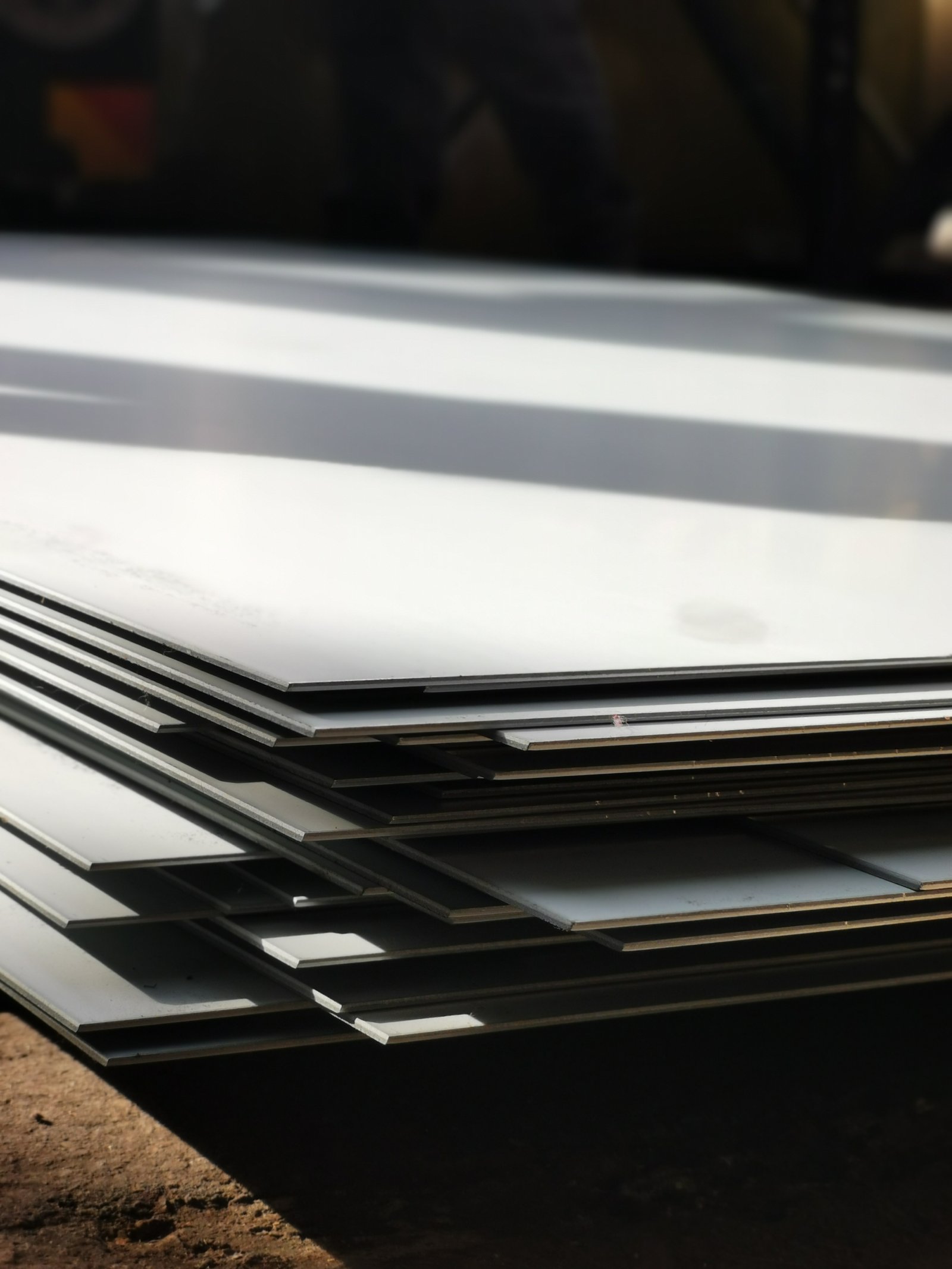
When a client asks me, "Why is your price X?", my answer is never a single number. It's a story about the global journey of raw materials, the energy consumed to forge them, the hands that shape them, and the political frameworks that govern their movement across borders. Each of these elements is a variable in the complex equation of stainless steel pricing. Ignoring any one of them is like trying to navigate the ocean with a faulty compass. At MFY, our competitive strength lies in our fully integrated supply chain, which gives us visibility and control over many of these variables. From sourcing raw materials to final export delivery, we manage the entire process. This integration allows us to mitigate risk and optimize costs in a way that a simple trader cannot, ultimately delivering greater value and predictability to our clients, whether they are in booming Southeast Asia or the established markets of Europe.
The Bedrock of Cost: Raw Materials and Energy
The final price of any stainless steel sheet begins with its core ingredients. For the popular austenitic grades like 304 and 316, nickel is the most significant and volatile cost driver. Its price, dictated by trading on the London Metal Exchange (LME), can swing dramatically based on geopolitical events, mining disruptions, and investor speculation. I remember the nickel crisis of early 2022 when prices surged to unprecedented levels overnight; this sent shockwaves through the industry, forcing producers, including us at MFY, to adjust pricing rapidly to reflect the new reality. A producer’s ability to secure a stable and cost-effective nickel supply is a fundamental competitive advantage.
Of course, nickel isn't the only player. Chromium, which provides corrosion resistance, is another key alloy, with a large portion of the world's supply originating from South Africa2. Molybdenum, essential for the enhanced corrosion resistance of 316-grade steel, has its own distinct supply chain and price dynamics. The cost and availability of high-quality scrap metal, a critical input for production via Electric Arc Furnaces (EAF), also varies significantly by region. A region with a mature industrial base, like the EU or USA, often has a more developed scrap collection and processing infrastructure, which can sometimes offset other high costs.
The energy required to melt these materials and roll them into sheets is an enormous and often underestimated cost factor. Steelmaking is an incredibly energy-intensive process. Regional disparities in electricity and natural gas prices have a direct and substantial impact on the production cost per ton. For instance, the recent energy price hikes in Europe have put immense pressure on local steel mills, widening the cost gap with regions where energy is more affordable or subsidized. Our operations in China benefit from a relatively stable and large-scale energy grid, which helps us maintain more predictable production costs, a stability we pass on to our clients.
The Hand of Government: Tariffs, Duties, and Subsidies
If raw materials form the foundation of cost, government policy is the architect that designs the final market price. Protectionist measures are the most visible and impactful of these policies. As discussed, the US Section 232 tariffs and the EU's AD/CVD system are explicitly designed to make imported steel more expensive, thereby leveling the playing field for domestic producers who face higher internal costs. These are not static figures; they are subject to political reviews, and the landscape of targeted countries and duty percentages can change, adding a layer of risk and uncertainty for importers.
I can share a direct MFY experience here. We were working with a new construction contractor client in Europe who was accustomed to sourcing from within the EU. They were initially hesitant to import from China, fearing the complexity of AD/CVD regulations. Our export team stepped in, providing a complete, door-to-door solution with all duties and customs clearance calculated and handled by us. By providing this transparency and taking on the logistical burden, we were able to demonstrate a clear landed cost advantage and secure their trust. This proactive management of trade barriers is a core part of our value proposition.
On the other side of the coin are subsidies and government support. In some countries, governments may offer incentives to boost their domestic steel industry and encourage exports. These can take many forms, such as preferential tax rates, low-interest loans, land grants for new mills, or direct support for research and development. This kind of support can artificially lower the production cost for mills in that country, allowing them to offer more competitive prices on the global market. This dynamic creates an inherently uneven playing field, where the price of steel is influenced not just by a company's efficiency but also by its government's industrial policy.
The Market Forces: Local Demand, Logistics, and Labor
Beyond inputs and politics, pure market dynamics play a crucial role. A region with booming construction and manufacturing sectors, like India or parts of Southeast Asia, has a voracious appetite for steel. This high domestic demand can absorb a significant portion of local production, creating a healthy and competitive internal market. Sometimes, if demand surges unexpectedly, it can even push local prices up, temporarily narrowing the gap with import prices. Conversely, in a region with slower economic growth, mills may have more excess capacity, forcing them to compete more aggressively on price for export orders.
Logistics is a critical and often-overlooked cost variable. The journey from the mill to the client's facility is fraught with potential costs and delays. Ocean freight rates themselves are notoriously volatile, influenced by fuel prices, global shipping capacity, and port congestion. But it doesn't stop at the port. Inland transportation via truck or rail, warehousing costs, insurance, and customs clearance fees all add to the total landed cost. A client of ours in the US Midwest needs to factor in several hundred dollars per ton just for the inland journey from the port of Long Beach.
| Logistics Component | From Shanghai to Coastal CA, USA | From Shanghai to Inland IL, USA |
|---|---|---|
| Ocean Freight (per ton) | ~$100 | ~$100 |
| Port & Customs Fees | ~$50 | ~$50 |
| Inland Freight (Truck/Rail) | ~$80 | ~$350 |
| Total Logistics Cost | ~$230 | ~$500 |
ly, while labor costs are undeniably lower in Asia than in the West, this can be an oversimplification. The critical factor is often the productivity and skill level of the workforce. Producing highly specialized stainless steel grades, for example, requires experienced metallurgists and skilled technicians. While general labor may be cheaper, this specialized talent can command higher wages regardless of location. Furthermore, investments in automation and technology can significantly boost productivity, allowing a modern mill in China to achieve efficiencies that can rival or even exceed those of older mills in higher-wage countries.
Nickel prices affect stainless steel costsTrue
Nickel is a key component in austenitic stainless steel grades, and its price volatility directly impacts production costs.
Labor costs are the main price driverFalse
While labor is a factor, raw material costs and energy expenses typically have greater impact on final pricing.
How have historical price trends influenced current pricing in different regions?
Are you trying to predict future stainless steel prices by only looking at today's numbers? The market has a long memory, and past events create the strategies and reactions we see today. Understanding this history is key to anticipating future movements. This section explores how historical trends have shaped the current global pricing landscape, offering you deeper predictive insight.
Historical price trends, shaped by events like the 2008 financial crisis, commodity supercycles, and the COVID-19 pandemic, have created lasting structural shifts. They have influenced regional inventory strategies, risk management practices, and trade policies, which all directly impact today's stainless steel sheet pricing.
Looking at a historical price chart for stainless steel is like reading a story of the modern global economy. You can see the boom years of the early 2000s, the sharp shock of the 2008 financial crisis, the volatility of the pandemic, and the impact of geopolitical conflicts. These aren't just squiggles on a line; each peak and valley has left a scar or a lesson on the industry. From my perspective at MFY, I’ve seen how these events have fundamentally changed how our clients think about procurement. Before 2008, long-term, fixed-price contracts were more common. After the crash, a move towards more flexible, spot-price-based purchasing took hold. The supply chain chaos of 2020-2021 taught everyone the painful lesson that supply chain resilience is as important as price. A manufacturing client in India recently told me that they now maintain a higher-than-usual inventory of critical 316L sheets, a direct result of the shortages they faced during the pandemic. This "inventory insurance" is now a permanent part of their cost structure. These past events are not in the past; they are actively shaping the decisions and prices of today.
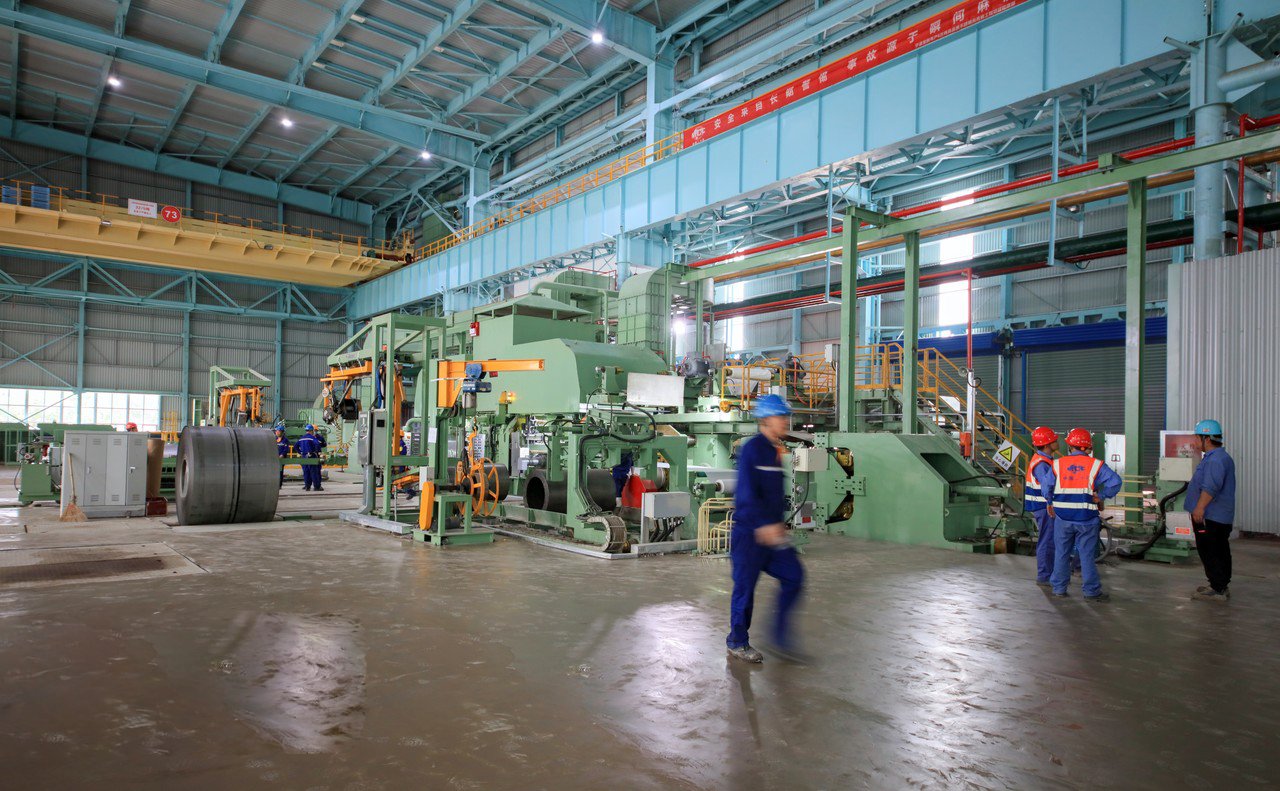
The current pricing environment for stainless steel sheet didn't materialize in a vacuum. It is the direct descendant of decades of economic cycles, technological advancements, and political decisions. Every major price shock of the past has forced the industry to adapt, and those adaptations have become embedded in today's market structure. For instance, the memory of extreme price volatility encourages the use of hedging mechanisms and a more cautious approach to inventory management. At MFY, we have built our entire business model around the principles of agility and resilience, values that were forged in the fires of past market disruptions. Our integrated supply chain is a direct response to the historical lesson that relying on a fragmented and disconnected chain of suppliers is a recipe for disaster in a volatile world. We provide our clients not just with steel, but with a buffer against the echoes of market history.
The Ghost of Crises Past: The 2008 Financial Crash and Its Aftermath
The global financial crisis of 2008 was a watershed moment for the steel industry. Before the crash, a commodity "supercycle," fueled by China's explosive economic growth, had driven prices for raw materials like nickel to record highs. The industry was geared for perpetual growth. When the global economy abruptly stalled, demand for everything from cars to new buildings evaporated, and the stainless steel market collapsed along with it. Mills were left with massive, expensive inventory, and many buyers who had locked in high-priced contracts faced bankruptcy.
This traumatic event embedded a deep-seated risk aversion into the market that persists to this day. In the years that followed, the industry shifted away from long-term fixed pricing towards more short-term and spot-market-based transactions. Buyers became more cautious, adopting "just-in-time" inventory strategies to avoid being caught with expensive stock in a downturn. From our perspective at MFY, we saw a clear shift in client behavior. Requests for smaller, more frequent shipments increased, and the demand for flexible pricing mechanisms grew. This event single-handedly reshaped risk management practices across the entire supply chain, making the market more reactive and, in some ways, more volatile.
The crisis also accelerated a geographical shift. As demand in the West faltered, the relative importance of emerging markets, particularly China and India, grew even faster. These regions recovered more quickly, and their continued growth provided a lifeline for global steel producers. This cemented the role of Asia not just as a production hub, but as the primary driver of global demand, a reality that continues to dictate global trade flows and pricing power today.
The Pandemic Shock: Rewriting the Rules of Supply Chain Management
If the 2008 crisis was a demand-side shock, the COVID-19 pandemic of 2020-2022 was a supply-side cataclysm. The lockdowns, port closures, and labor shortages created unprecedented disruptions. Suddenly, the "just-in-time" inventory model that had been so popular post-2008 became a massive liability. I spoke with dozens of clients during this period who had production lines sitting idle, not because of a lack of orders, but because they simply could not get their hands on the necessary stainless steel sheets, which were stuck on a ship or in a quarantined port for weeks on end.
The immediate effect was a dramatic price surge, driven by scarcity and astronomical freight costs. But the long-term impact is far more profound. The pandemic forced a global reassessment of supply chain strategy. The focus shifted from pure cost minimization to resilience and security of supply. Companies began actively diversifying their supplier base, seeking partners in different geographical regions to avoid being over-reliant on a single source. This is a trend we have directly benefited from at MFY. Our integrated model and proven reliability became a key selling point for new clients in Southeast Asia and the Middle East who were looking to build more robust supply chains.
The "just-in-case" inventory model has made a comeback. Many manufacturing companies now willingly carry higher levels of safety stock as a buffer against future disruptions. This ties up more capital and adds to warehousing costs, but it's now seen as a necessary cost of doing business. This shift represents a fundamental change in the cost structure for many end-users, influencing their purchasing decisions and the price they are willing to pay for reliability. The historical lesson learned is that the cheapest price is worthless if the material never arrives.
The Rise of Economic Nationalism and Its Pricing Impact
Running parallel to these economic shocks has been a growing trend of economic nationalism, which has reshaped trade flows over the past decade. The implementation of Section 232 tariffs by the US in 2018 was a pivotal moment. It was a clear signal that the world's largest economy was prioritizing domestic industry protection over the principles of free trade. This move, along with the EU's continued use of AD/CVD measures, has effectively bifurcated the global market. It created high-price islands in the West and a more competitive, but fiercely contested, market everywhere else.
This trend has forced a strategic realignment for global producers and buyers alike. For a company like MFY, it meant intensifying our focus on markets with more favorable trade environments, such as those in Southeast Asia, the Middle East, and Russia, where our products remain highly competitive. We have invested heavily in understanding the specific needs and logistical challenges of these regions, building a strong presence there.
For buyers, especially large multinational corporations, it has made supply chain mapping a critical exercise. A major equipment integrator we work with, who has manufacturing plants in both the US and Southeast Asia, now employs a dual-sourcing strategy. They use local US producers for their American plants to avoid tariffs, while their Asian plants are supplied by us from China to optimize costs. This complex, regionally-tuned strategy is a direct response to the historical trend of protectionism. It demonstrates that history doesn't just influence price; it actively shapes the sophisticated corporate structures and strategies required to navigate the modern global market.
2008 crisis increased risk aversionTrue
The financial crisis led to a permanent shift toward short-term contracts and just-in-time inventory strategies in the steel industry.
Pandemic reduced inventory levelsFalse
COVID-19 actually caused companies to increase safety stock, reversing the previous just-in-time trend.
Are you feeling caught between paying high local prices and navigating the risks of global sourcing? The complexity of regional price disparities can feel overwhelming, potentially harming your budget and project timelines. You need a clear, actionable strategy to turn this global complexity into your competitive advantage. This section outlines practical approaches for intelligently navigating these differences for optimal procurement outcomes.
Companies can navigate regional price disparities by adopting a Total Cost of Ownership (TCO) analysis instead of focusing on price alone. Key strategies include diversifying their supplier base across different regions, utilizing hedging for raw materials, and partnering with integrated suppliers for logistical expertise.
Simply acknowledging that prices differ across the globe is not a strategy. The crucial next step is to build a robust framework for making decisions within this complex environment. Over the years at MFY, I’ve transitioned from simply being a supplier to becoming a strategic sourcing consultant for many of our clients. The conversation has evolved from "What is your price per ton?" to "How can you help us optimize our landed cost and mitigate risk?" This shift is vital. For example, I worked with a large engineering and construction contractor in the Middle East. They were juggling quotes from Europe, India, and China, each with different pricing, lead times, and payment terms. They were paralyzed by the variables. We helped them implement a TCO model that quantified everything—freight, insurance, tariffs, inventory carrying costs, and the cost of potential delays. This analytical approach removed the emotion and guesswork, allowing them to see the most genuinely economical path. It's about transforming a chaotic market into a set of manageable variables and making data-driven choices. This is the modern path to procurement success.

In a world of fluctuating prices and geopolitical uncertainty, a passive approach to sourcing is a recipe for failure. The most successful companies I work with are proactive, analytical, and strategic. They treat their supply chain not as a cost center, but as a source of competitive advantage. Navigating price disparities requires a multi-pronged approach that balances cost, risk, and quality. It demands a move away from transactional relationships towards genuine partnerships. At MFY, we champion this approach. Our integrated supply chain, which covers everything from raw material trading to final export, is designed to give our partners the tools and transparency they need to implement these advanced strategies. We provide the stability and expertise that allows them to confidently source globally, turning regional price differences into opportunities rather than threats.
Adopting a Total Cost of Ownership (TCO) Framework
The single most critical shift a company can make is to move from evaluating procurement based on purchase price to evaluating it based on Total Cost of Ownership (TCO). The price on the quote is just one component of the final cost. A TCO analysis forces you to identify and quantify all the costs associated with a purchase, from start to finish. This includes the obvious costs like the material price, shipping, and tariffs. But it also includes the less obvious—but equally important—costs.
These hidden costs can include inventory carrying costs (the cost of holding material in a warehouse), the cost of quality (what is the cost of a rejected batch or a material failure in the field?), and currency exchange risk. It also includes the administrative overhead of managing a supplier. I recall a client in the manufacturing sector who chose a supplier with a 5% lower initial price. However, that supplier demanded cash-in-advance payment terms, whereas MFY offered 60-day terms. The cost of financing that advance payment for several months completely wiped out the initial 5% saving.
A robust TCO model is your most powerful decision-making tool. It allows for a true, apples-to-apples comparison between a high-priced domestic supplier with low shipping costs and short lead times, and a low-priced international supplier with higher shipping costs and potential tariff implications. Building this model requires diligence, but it replaces guesswork with data, forming the foundation of any intelligent sourcing strategy.
Strategic Supplier Diversification and Relationship Building
Putting all your eggs in one basket is a dangerous game in the modern steel market. Over-reliance on a single supplier, or even a single geographic region, exposes your business to significant risk. A port strike, a new tariff, a natural disaster, or a political conflict could sever your supply line overnight. The strategic solution is supplier diversification. This doesn't mean simply collecting quotes from a dozen random suppliers; it means building a curated portfolio of trusted partners in different regions.
For example, a major equipment manufacturer might maintain a primary relationship with a large-scale, cost-effective producer like MFY in China for the bulk of their needs. Simultaneously, they might cultivate a relationship with a secondary supplier in a different region, like India or Turkey, for a smaller portion of their volume. They might even retain a domestic supplier for urgent, small-batch needs, even at a higher price. This creates a flexible and resilient supply chain. If one channel is disrupted, they can quickly pivot and ramp up orders from another, ensuring production continuity.
Crucially, this is about building deep, long-term relationships, not just having a list of names. It involves regular communication, mutual trust, and transparency. We work with our core clients not as one-off transactions, but as an extension of their own team. We understand their production schedules, their quality requirements, and their business challenges. This deep relationship allows us to anticipate their needs and work collaboratively to solve problems, a level of service that cannot be achieved through purely transactional sourcing.
Leveraging Financial Tools and Logistical Expertise
Navigating price disparities also involves a degree of financial and logistical sophistication. For large-scale buyers, financial hedging can be a powerful tool3. If you know you need to purchase a large volume of 304-grade sheets in six months, and you are concerned that the price of nickel might rise, you can use the futures market on the LME to lock in a price for nickel today. This is an advanced strategy that carries its own risks, but for large corporations, it can be an effective way to mitigate price volatility.
For most companies, however, the more accessible strategy is to leverage the expertise of their supply partners. A sophisticated supplier like MFY has a dedicated team that constantly monitors freight markets, trade policies, and customs regulations. We use our scale and established relationships with shipping lines to secure more competitive freight rates than a smaller company could achieve on its own. We understand the nuances of Incoterms (the international trade terms that define responsibilities between seller and buyer) and can advise clients on the best terms for their situation (e.g., FOB vs. CIF vs. DDP).
we had a client in Southeast Asia who was new to importing from China. They were quoted a very low ex-works (EXW) price from another supplier but had no idea how to manage the export license, inland freight to the port, and ocean shipping. We provided them with a clear, all-inclusive Delivered at Place (DAP) quote. While our base price may have appeared slightly higher, our total landed cost was lower and, more importantly, it eliminated a huge logistical headache and risk for the client. This is the value of partnering with an expert who can manage the complexities of global trade on your behalf.
TCO includes hidden costsTrue
Total Cost of Ownership analysis factors in inventory carrying costs, quality risks, and administrative overhead beyond just purchase price.
Supplier diversification means random sourcingFalse
Strategic supplier diversification involves building curated partnerships in different regions, not just collecting random quotes.
What are the best practices for sourcing stainless steel sheets considering regional price factors?
Knowing the strategies is one thing, but how do you implement them effectively in your day-to-day operations? Without clear best practices, even the best strategy can fail, leading to costly errors and supply chain vulnerabilities. You need a practical checklist for success. This section details the essential best practices for sourcing stainless steel sheets in a complex global market.
Best practices for global sourcing include conducting rigorous due diligence on potential suppliers, including quality audits and financial stability checks. It is also crucial to clearly define specifications, understand Incoterms to manage risk and cost, and prioritize building long-term, transparent partnerships over short-term transactional gains.
Theory is easy, but execution is everything. The difference between a successful global sourcing program and a failed one often comes down to the small, disciplined details of execution. I've seen companies with brilliant TCO models on paper fail in practice because they skipped a crucial step: proper supplier vetting. They were lured by a slick website and a low price, only to receive a shipment of material with incorrect specifications or fraudulent Mill Test Certificates (MTCs). The downstream cost of such a failure—production delays, product recalls, reputational damage—can be catastrophic. That's why at MFY, we encourage and welcome rigorous due diligence from our potential clients. We proudly open our doors for facility tours and third-party audits. We understand that trust is not given; it is earned through transparency and consistent performance. The best practices we are about to discuss are not bureaucratic hurdles; they are the essential guardrails that protect your business and ensure you capture the true value of global sourcing, transforming regional price differences into a reliable, sustainable advantage.
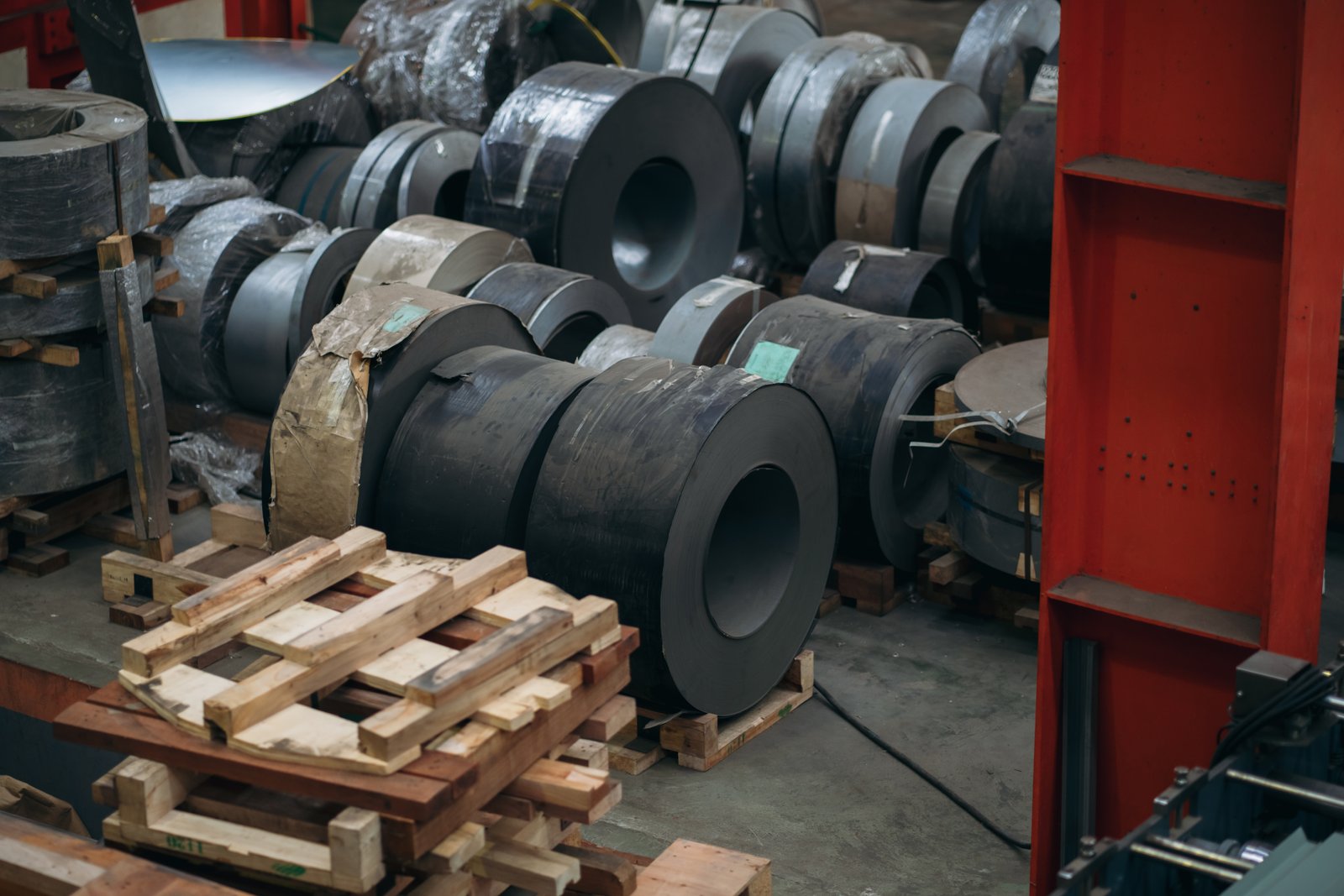
Turning global sourcing strategy into a tangible success requires a disciplined, process-driven approach. It’s about creating a system that is repeatable, transparent, and minimizes risk at every stage. The most sophisticated procurement teams I work with operate like a well-oiled machine, with clear protocols for every step, from initial supplier discovery to final delivery and quality acceptance. They understand that a single weak link in the chain can compromise the entire operation. Our role at MFY is often to act as a key, high-performance component within that machine. By providing a fully integrated and transparent service—from providing verifiable MTCs with every shipment to offering real-time tracking on exports—we help our clients execute their best practices with confidence and efficiency. We don't just sell steel; we sell peace of mind.
Conducting Rigorous Due Diligence and Quality Verification
The foundation of any successful sourcing relationship is trust, and trust begins with due diligence. Before engaging with any new international supplier, a thorough vetting process is non-negotiable. This goes far beyond just looking at their website or marketing materials. It should include asking for, and verifying, business licenses, quality certifications4 (like ISO 9001), and financial statements to assess their stability. If possible, a physical or third-party audit of the supplier's production and warehousing facilities is invaluable. It allows you to see their operations, quality control processes, and inventory firsthand.
Quality verification is a continuous process. Every order should be accompanied by a clear and detailed Purchase Order (PO) that specifies the exact grade of steel (e.g., 304, 316L), dimensions, finish (e.g., 2B, BA, No. 4), and any specific ASTM or EN standards that must be met. Upon shipment, you must insist on receiving a Mill Test Certificate (MTC) or Material Test Report (MTR) that shows the chemical composition and mechanical properties of the specific batch of steel you are receiving. I recall a case with a new equipment integrator client who had been burned in the past by a supplier providing fake MTCs. As part of our onboarding, we walked them through our digital tracking system, which links every coil we process back to its original raw material heat number, providing an unbroken chain of custody and guaranteeing authenticity. This level of transparency is a critical best practice.
For high-value or mission-critical orders, consider using a third-party inspection5 (TPI) service. A TPI agent can visit the supplier's facility before shipment to verify the material against the PO, check packaging and labeling, and witness the loading process. The small cost of a TPI can save you from a multi-thousand-dollar mistake. It's an insurance policy against quality and quantity disputes.
Mastering a Fait Bids and Understanding Incoterms
Clarity in communication is paramount. Every Request for Quotation (RFQ) should be as detailed as possible to ensure you are receiving bids that can be accurately compared. Specify not just the material, but also the required packaging (e.g., seaworthy export packing), delivery timeline, and the desired Incoterm. A supplier's price for "EXW" (Ex-Works, where you handle all shipping from their factory door) will be vastly different from their price for "DAP" (Delivered at Place, where they handle shipping to your facility, minus import duties).
Understanding Incoterms is not just for the logistics department; it's a critical risk management function for procurement managers. The Incoterm defines the precise point in the shipping process where the risk and cost transfer from the seller to the buyer. Choosing FOB (Free on Board) means your responsibility starts once the goods are loaded onto the vessel at the origin port. Choosing CIF (Cost, Insurance, and Freight) means the seller is responsible for the sea journey, but your risk often begins at the same time as FOB.
| Incoterm | Seller's Responsibility | Buyer's Responsibility | Best For... |
|---|---|---|---|
| EXW (Ex Works) | Make goods available at their factory. | All transport, export/import clearance, risk. | Buyers with strong logistics partners in the origin country. |
| FOB (Free On Board) | Deliver goods to the vessel at origin port. | Ocean freight, insurance, import clearance, final delivery. | Buyers who want to control their own freight contracts. |
| CIF (Cost, Insurance, Freight) | Arrange & pay for transport and insurance to destination port. | Import clearance, duties, final delivery from port. | Buyers who want a simpler freight process handled by the seller. |
| DAP (Delivered at Place) | Deliver goods to the buyer's named destination. | Import clearance and payment of all duties/taxes. | Buyers wanting a near door-to-door service without handling import taxes. |
We often spend considerable time with new clients explaining these terms to ensure they choose the one that best aligns with their risk appetite and logistical capabilities. A mismatched Incoterm choice can lead to unexpected costs and legal disputes, undermining an otherwise well-structured deal.
Prioritizing Partnership Over Transaction
ly, the ultimate best practice is to shift your mindset from purely transactional procurement to strategic partnership. A transactional approach focuses on getting the lowest price on a single deal. A partnership approach focuses on creating long-term, mutual value. A good partner will do more than just sell you steel; they will work with you to solve your problems.
This involves open and regular communication. Share your production forecasts with your key suppliers so they can plan their inventory and capacity accordingly. Provide them with feedback on their performance. When challenges arise—as they inevitably do in global trade—a partnership approach means working together to find a solution, rather than engaging in a blame game. For example, we have several long-term clients for whom we hold dedicated inventory of their specific stainless steel sheet requirements. This "consignment" stock, based on their forecasts, allows them to draw material with very short lead times, a service born out of years of trust and collaboration.
Ultimately, your supplier should be a competitive advantage. They should bring you new ideas, alert you to market trends, and offer solutions that make your business more efficient and profitable. When you source from a partner like MFY, you are not just buying a stainless steel sheet; you are gaining access to our entire integrated supply chain, our market intelligence, and our commitment to your success. This collaborative approach is the most effective way to navigate regional price factors and build a truly resilient, world-class supply chain.
Supplier due diligence is essentialTrue
Conducting thorough supplier vetting including quality audits and financial checks prevents costly errors in stainless steel sourcing.
Incoterms only affect logisticsFalse
Incoterms define both cost allocation and risk transfer points, making them crucial for procurement risk management.
Conclusion
Ultimately, navigating global stainless steel prices requires moving beyond the sticker price. A strategic approach, focused on total cost, supplier diversification, and deep partnerships, is essential. This transforms complex regional disparities from a risk into a powerful competitive advantage for your business's long-term success.
-
Understand the effect of tariffs on steel pricing strategies in the USA ↩
-
Learn about South Africa's role in chromium supply for stainless steel production ↩
-
Understand how financial hedging can mitigate price volatility in commodity purchases. ↩
-
Identify necessary certifications to ensure steel quality and supplier reliability ↩
-
Discover how TPIs mitigate risks in sourcing and receiving goods ↩
Have Questions or Need More Information?
Get in touch with us for personalized assistance and expert advice.
